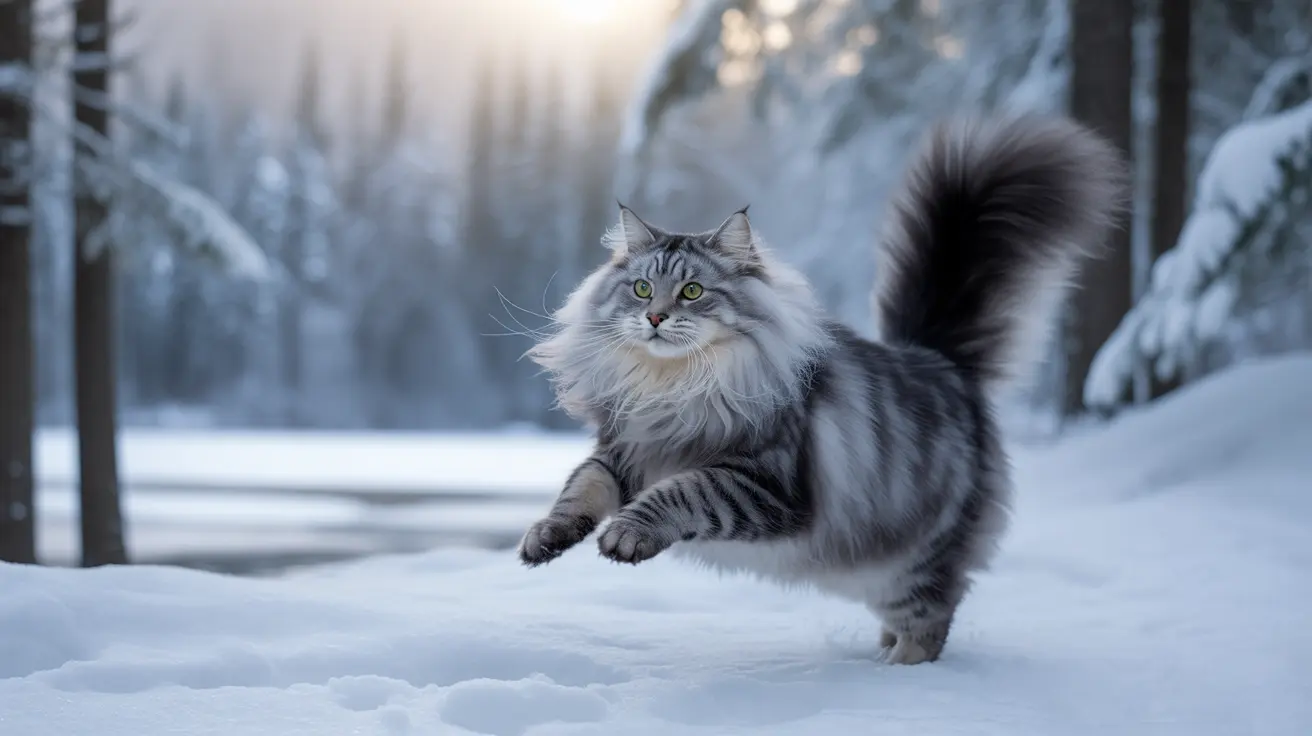The Desert Origins of Domestic Cats
To understand cats' typical reactions to snow, we must first consider their evolutionary background. Domestic cats evolved from wild ancestors in warm, arid regions like ancient Egypt and the Middle East. This heritage explains why most cats instinctively seek warm, dry environments and may show hesitation when encountering cold, wet conditions like snow.
Breed-Specific Snow Tolerance
Some cat breeds have developed remarkable adaptations to cold weather through selective breeding. Norwegian Forest Cats, Siberian Cats, and Maine Coons possess thick, water-resistant fur coats and robust paw pads that provide natural protection against snow and cold temperatures. These breeds typically show greater tolerance and even enjoyment of snowy conditions compared to their short-haired counterparts.
Individual Personality and Snow Experience
Beyond breed characteristics, a cat's individual personality and early life experiences significantly influence their reaction to snow. Some cats display immediate curiosity and playfulness, while others exhibit caution or complete avoidance. Cats who encounter snow during their formative weeks (between 2-7 weeks old) often develop more positive associations with it.
Physical Adaptations and Winter Safety
Cats possess several physical adaptations that help them cope with cold weather, including:
- Thicker winter coats that develop naturally in response to shorter days
- Sensitive paw pads that help them detect dangerous temperature changes
- The ability to conserve body heat by curling into tight balls
- Natural insulation from their fur and subcutaneous fat layer
Health Considerations in Snowy Weather
While some cats may enjoy brief encounters with snow, extended exposure can pose serious health risks. Veterinarians recommend monitoring outdoor time in temperatures below 45°F (7°C), especially for:
- Senior cats
- Kittens
- Cats with health conditions
- Short-haired or hairless breeds
- Cats with wet fur
Creating Safe Snow Experiences
If your cat shows interest in snow, you can create safe opportunities for exploration by:
- Supervising short outdoor sessions
- Providing immediate access to warm indoor spaces
- Checking paw pads regularly for snow accumulation or ice
- Wiping off any de-icing chemicals that might stick to their feet
- Ensuring they have a warm, dry place to retreat
Frequently Asked Questions
Do all cat breeds like snow, or are some breeds more tolerant of cold weather than others?
Cold-weather breeds like Norwegian Forest Cats, Siberian Cats, and Maine Coons are naturally more tolerant of snow and cold temperatures due to their thick fur coats and robust paw pads. However, most domestic short-haired cats and breeds from warmer climates typically show less tolerance for snow and cold weather.
Why do most cats prefer warm, dry environments over snow and cold weather?
Cats' desert ancestry makes them naturally inclined toward warm, dry environments. Their evolutionary background as desert animals means they're better adapted to heat than cold, and their sensitive paw pads can make snow contact uncomfortable.
How can I keep my cat safe and comfortable if they go outside in snowy, cold conditions?
Limit outdoor time in cold weather, ensure they have constant access to warm shelter, clean their paws after snow exposure, and monitor them for signs of discomfort. Consider providing them with a heated outdoor shelter if they spend significant time outside.
What are common signs that my cat is too cold or at risk of hypothermia or frostbite in winter?
Watch for shivering, lethargy, seeking unusual warm places, pale or bluish paw pads and ear tips, and difficulty walking. If you notice these signs, bring your cat inside immediately and contact your veterinarian if symptoms persist.
Can indoor cats safely play in the snow, and how should I supervise their outdoor snow exposure?
Indoor cats can safely experience snow under close supervision. Keep initial exposures brief (5-10 minutes), ensure they have an easy escape route inside, and watch for signs of discomfort. Never force a reluctant cat to interact with snow.






